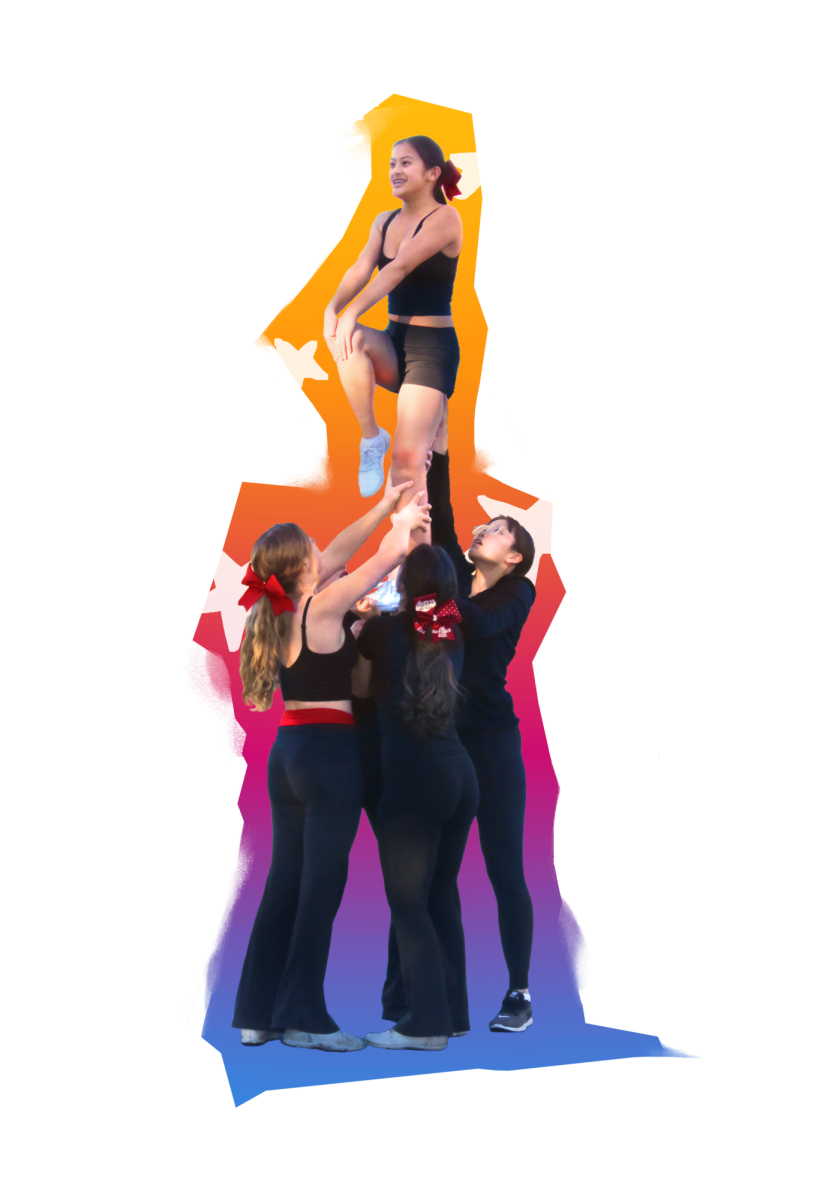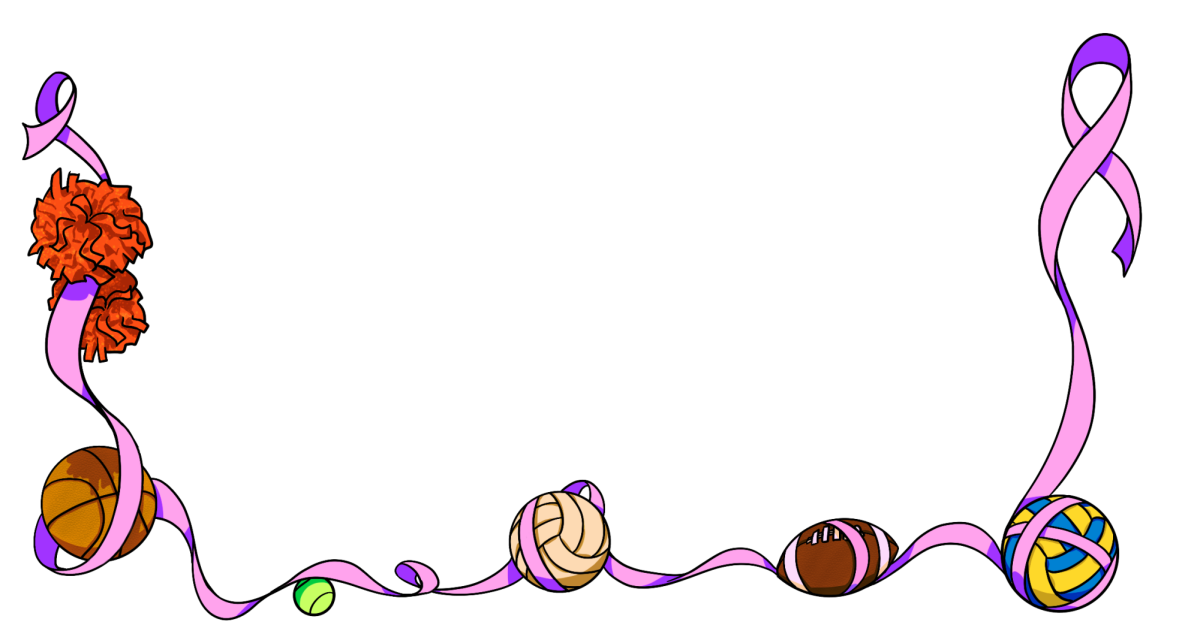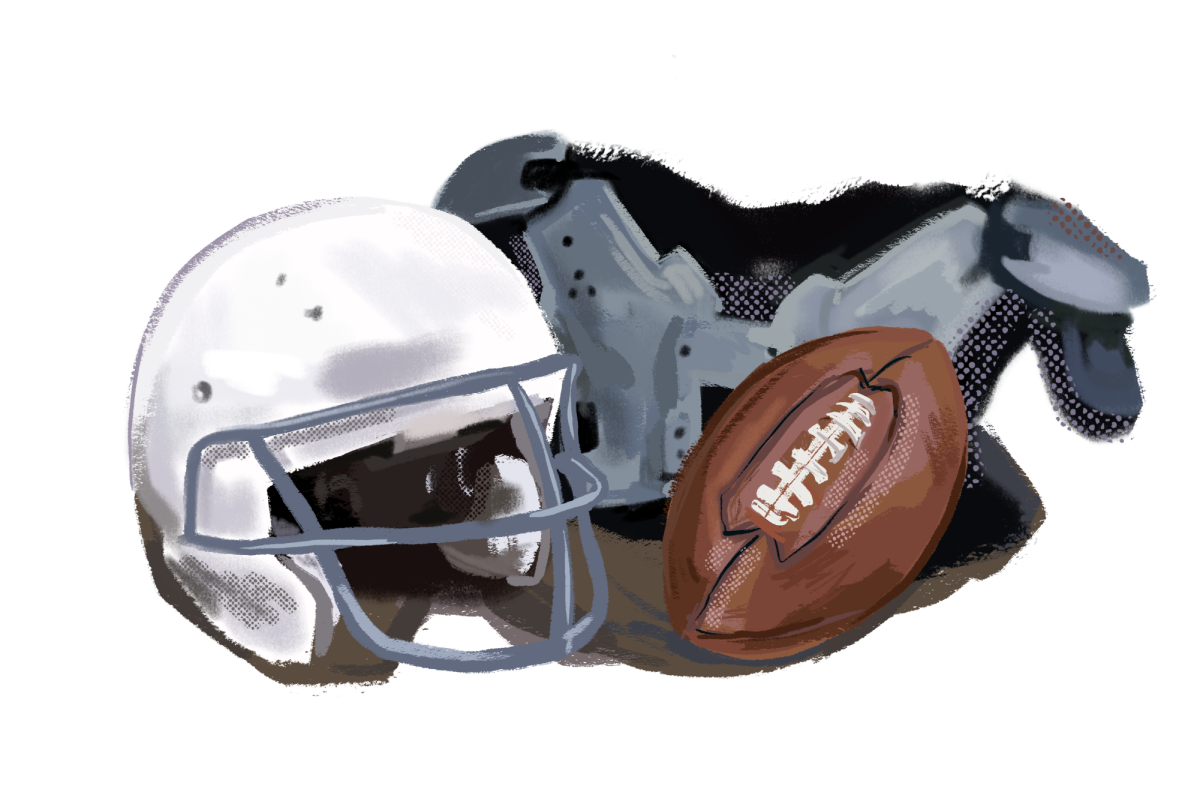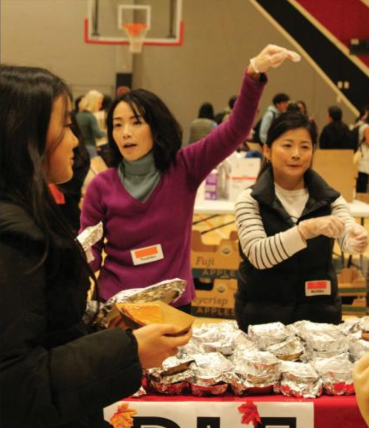Eating a Wendy’s four-by-four burger and fries and then running a mile around the track. Getting a dubious haircut. Doing TikTok dances every day for a month. In some fantasy-football leagues, losing comes at a great cost.
Traditions like these add flavor to the virtual world of fantasy football, in which participants draft real NFL athletes for their teams beginning at the start of the season in September. The game is played on the NFL Fantasy website or app, and players earn points based on the outcomes of actual NFL matchups. After an initial draft, players have the flexibility to change their team lineups by trading with fellow participants. In each league, the player with the most overall victories in a weekly matchups wins the game.
Senior Ryan Kim’s dad introduced him to the game when he was 7, and he’s played ever since. “When I was little, my dad used to play with his friends,” he said. “That was always interesting to me.”
Typically, fantasy football is played in leagues of around 12 participants. English teacher Jordan Wells plays in a league with her family, using the game to stay connected with them. “I started (playing) six years ago when my brother put together a family team,” she said. “It keeps us just kind of talking, whether it’s actually talking or congratulating each other. It’s a fun activity to do with my family.”
Each week, a team’s starting-lineup players earn points in NFL games, which contribute to the team’s total weekly score. Teams are randomly paired in weekly matchups, and the team with the higher weekly score wins. In Wells’ family league, the weekly matchups usually prompt a healthy dose of competition. “There’s a group chat going on, of course, and (there’s) a lot of smack talk, mainly my brother,” she said. “He’s like the commissioner of the league, and he’ll talk a lot of nuts. There was one year where he renamed his team every week based on who he was playing, to have a name that was kind of anti-them.”
Fantasy football also helps Wells connect with her students. “Sometimes I’ll ask students for advice if I’m torn between who should I bench that week,” she said. “As a player, it’s fun to hear who’s performing on their teams. Also, even if your team kind of sucks, it’s fun to commiserate.”
Senior Marcello Chang also appreciates the social aspect of fantasy football, as playing in a league with his friends at school ensures they always have something to discuss. “It’s fun to be able to talk to people about it,” he said. “There’s a lot going on with matchups and trading and people’s standings (in the league).”
At the start of each season, league members draft teams in 14 rounds of player selection, with each league member picking one player per turn. In most leagues, the draft order is randomized.
To prepare for draft day, many people conduct research by reading articles or partaking in mock drafts. Wells participates in many common types of drafting preparation. “I have to like them as a person,” she said. “I look at stats, I try to read a couple of articles ahead of time, look at how other people have drafted, (and) I do mock drafts.”
Fantasy football isn’t solely a game of knowledge — it’s also one of strategy, and many players begin a season with a specific tactic. For Wells, putting key players in certain positions early during draft day is crucial. “I do it differently than a lot of other people,” she said. “I draft my quarterback early. I like to have essentially one of each (position) before I start going for doubles on running backs and wide receivers.”
Sophomore Sanjan Joshi, on the other hand, looks to diversify his players’ teams of origin. “I look (to draft) players from a variety of teams,” he said. “I also look at their situation with their team and competitors on their team, not just what the fantasy football app predicts will happen.”
Player lineups in fantasy football are far from static. As the season progresses, participants can trade NFL players within their leagues to enhance and diversify their teams, according to Kim. “Let’s say you need a quarterback and someone else needs a running back,” he said. “You could trade so that you both have what you need — it’s like (a) mutualism.”
Trades are a way to get rid of unwanted players in a participant’s lineup. Joshi finds this aspect critical to improving his roster. “I try to offer trades to other people in my league to improve my team and to claim unknown and upcoming players on the ‘waiver wire,’ which is essentially the market for players who are not on a fantasy roster,” he said.
For Joshi, watching his team progress is one of the most satisfying parts of the game. “The best part of playing fantasy football is the thrill each week and the work you put in to craft the perfect roster,” he said. “It is my favorite part of the week, sitting down on Sundays and watching football for my team — the Green Bay Packers — and my fantasy football team.”





















